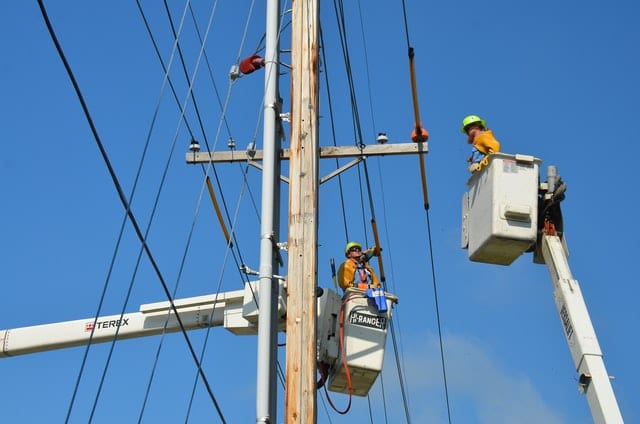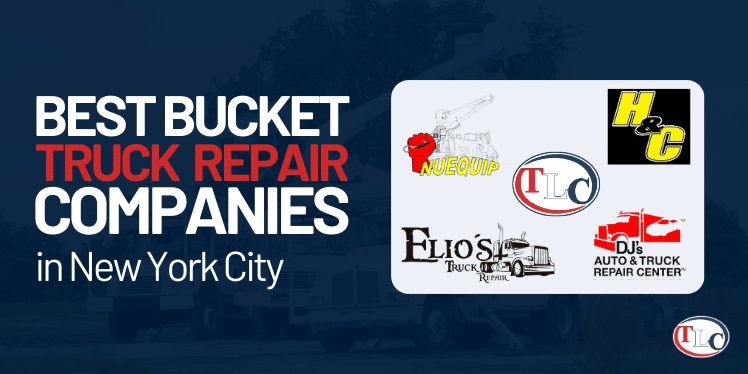Tasks on High Levels
The use of boom and bucket trucks has become common practice in many industries where workers need to accomplish tasks on high levels.
The purpose of this work is to answer some of the common questions people have on boom and bucket trucks.
What are Boom & Bucket Trucks?
This is a truck with a bucket or aerial work platform mounted on it. The bucket is securely attached to a hydraulic electric lift system that can raise a worker to reach high places through the extension and rotation of the boom.
Because this aerial lift device is mounted on a full-size truck, it is capable of handling heavyweights of up to 2,000lb. They serve industries such as telecommunications, electric utility, power distribution, tree care, and construction.
Bucket trucks differ to suit the needs of different industries. Before you choose one, make sure it will be suitable for your company’s needs.
Common Types of Bucket Trucks
1. Articulated Overcenter Bucket Truck
This type of bucket truck comes with the boom centered in the middle of the truck. Also, the boom which extends and raises the bucket doesn’t come as a single solid piece, rather it is jointed.
They’re particularly suited for use in open construction or industrial settings because the boom can be moved to different positions without moving the truck.
2. Articulated Non-Overcenter Bucket Truck
Unlike the former, the upper boom is held at a steady angle while the bucket is raised or lowered. So, the bucket doesn’t cross over the center of the truck. It is suited for use in fixed locations with easy access, such as building maintenance and some utility services.
3. Telescopic Articulated Bucket Truck
Here, the boom’s extenders are layered within the external piece. This allows the operator to extend the bucket at different degrees and distances. This works better in places with confined space.
4. Insulated Bucket Truck
As the name implies, this is insulated against electricity. It protects the operator from contact with electrical wires.
This is thanks to the following components:
✔ Non-conductive material bucket or liner.
✔ Insulated sections between the upper boom and elbow and also between the elbow and truck chassis. This is suited for use by utility companies.

What is a Bucket Truck Used for?
There are numerous places where a bucket truck makes work possible and life easier by providing a convenient and usually safe way of accessing different heights.
Here are a few examples:
✔ Non-conductive material bucket or liner.
✔ Insulated sections between the upper boom and elbow and also between the elbow and truck chassis. This is suited for use by utility companies.
✔ Bucket trucks are used by farmers for various tasks such as fruit picking, trimming trees, and making repairs to high farm structures.
✔ Animal rescuers can use bucket trucks to safely reach and rescue trapped animals.
✔ Some fire trucks come fitted with a boom and bucket which enables firefighters to put out fires on tall buildings and rescue people.
✔ Painters can use bucket trucks to make exterior painting easier and safer – much safer than ladders.
✔ These trucks can also be used to hang decorations or even stage performance tools.
And there you have it, common uses of bucket trucks. This goes to show just how versatile they can be.
To ensure their safe usage, you must learn about aerial lift safety and make sure your bucket truck operator is well-trained.
Also, regular inspections are necessary to ensure the bucket truck is in good working conditions.
How Much Does a Bucket Truck Cost?
There aren’t many bucket truck manufacturers out there, so the trucks are rather expensive.
A new boom truck of 23.5 ton with standard equipment cost about $129,850. A used one of the same specification costs about $94,500.
Generally, a light-duty bucket truck used for routine facility maintenance services would cost anywhere between $37,000 and $140,000. Heavy-duty trucks on the other hand (such as those used in construction) would cost about $84,000 to $370,000.
It would be more economical to rent one, especially when it’s only used sparingly. However, for companies that use it frequently, buying one would make more sense, unless they get a really good deal on a long-term lease.
Boom truck rental averages $594 per day, $1,724 a week, and $5,189 monthly. These are in no way fixed prices.
Typically, prices depend on the rental company, season, and location.

Where to Rent a Bucket Truck?
If you need a boom and bucket truck for aerial lifting services in New York City, we recommend you find a company that provides heavy lifting of all sorts of materials with powerful boom trucks.
Check out Trinchese Boom Services located in Brooklyn, New York, for more information.
How Much Does a Bucket Truck Weigh?
The weight of a bucket truck is not exactly simple to determine. A standard for determining this is with the Maximum Gross Axle Weight Rating (GAWR).
For bucket trucks, this depends on the exact model in question. It’s typically anywhere from 6,000lb to 7,000lb on the front axle and 6,700lb to 14,700lb on the rear.
However, for heavy-duty models, they can get up to 20,000lb and 34,000lb on the front and rear axles respectively.
Note that the GAWR includes the weight of the boom, bucket, operator, material, and vehicle.
For bucket trucks, the typical platform capacity is between 400lb and 2,000lb depending on the height. That is, the higher it gets, the less the weight capacity.

How Tall Does a Bucket Truck Go?
A bucket truck should be high enough to reach its target. For instance, a standard utility pole measures 40ft in height, so a bucket truck would have to reach this height or more.
Versalift has a range of bucket trucks from 29ft to 45ft high.
While these are common, there are other categories of bucket trucks, depending on the platform height.
This includes 29ft – 45ft (including non-overcenter models), 45ft – 65ft (including overcenter models) and 65ft to 125ft (including overcenter and telescopic models).
Operating a Bucket Truck
Now, just because you’re a good driver doesn’t mean you can operate a bucket truck. These trucks can be rather dangerous.
People (including the operator and others), buildings, vehicles, and other structures could get damaged by a bucket truck if it is wrongly operated.
If you own a bucket truck or need one to carry out a task, you’ll need to find a trained operator for it.
And if you’d like to get operating training for your bucket truck, that’s still possible. You just need to be up-to-date on the requirements.
Bucket Truck Operator Requirements
A potential operator needs a commercial driver’s license to operate a bucket truck of over 26,000lb GVWR (Gross Vehicle Weight Rating).
Also, according to OSHA requirements, all crane operators must be appropriately certified and have specialized licenses.
Most states, including New York City, require operators to be certified by the National Commission for the Certification of Crane Operators (NCCCO).
Ultimately, if the boom truck is ASME B30.5 compliant and has a maximum capacity of 2,000lb, then crane operating training, testing, and certification applies according to OSHA requirements.

To be trained on bucket truck operation, you can discuss with your dealer. A good dealer should offer you some training on operation, maintenance, and safety.
Some dealers even sponsor local training. You can find out if there are any resources available on this front from them.
There are also service seminars usually offered by bucket truck manufacturers where they offer customized training on a bucket truck depending on the needs of the company.
Finally, keep your manual close to you! Leave it in the bucket truck, it’ll come in handy most times.
Are Bucket Trucks the Same as Aerial Lifts?
The short answer is no. Aerial lifts have a bucket end, however, this is different from a full-on bucket truck.
Aerial lifts will lift an operator to a high level, although they’re limited to only certain surfaces (smooth and level) as well as a limited weight of about 500lb.
Bucket trucks on the other hand are mounted on a full-size service truck. Therefore, they support much larger weights (400lb to 2,000lb).
This does reduce the level they can get to. Still, what they lack in height, they more than make up for in functionality.
Who Invented the Bucket Truck?
The invention of the boom lift is attributed to Walter E Thorton-Trump in 1951. These were known as the “Cherry Pickers” back then.
A lot has changed since then. These cherry pickers have evolved into the modern-day bucket truck which has found use in numerous industries.
What to Do With Your Bucket Truck?
You might be wondering what to do with your bucket truck if you’re done with it. Perhaps, you’ve completed the project and are ready to move on.
A good idea would be to sell the truck. Which begs the question, “Where can you sell a bucket truck?”
Your best bet is to talk to your bucket truck mechanic. They probably know potential buyers.
You could also talk to your bucket truck dealer. They may be willing to strike a deal and take it off your hands.
Otherwise, put it up for sale online on your website or an e-commerce store such as eBay.
For a wide range of boom and bucket truck services, reach out to us at TLC Auto and Truck Repair or call (631) 201-5755 for more information.









